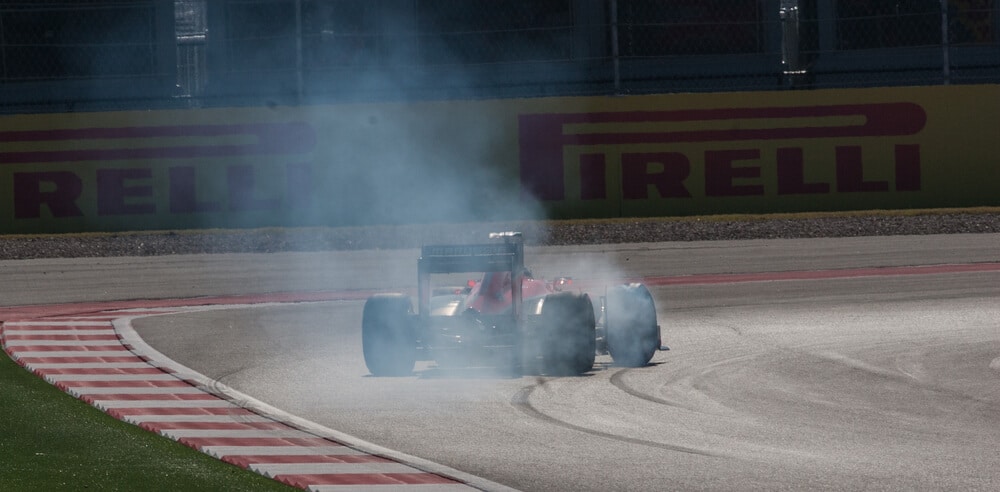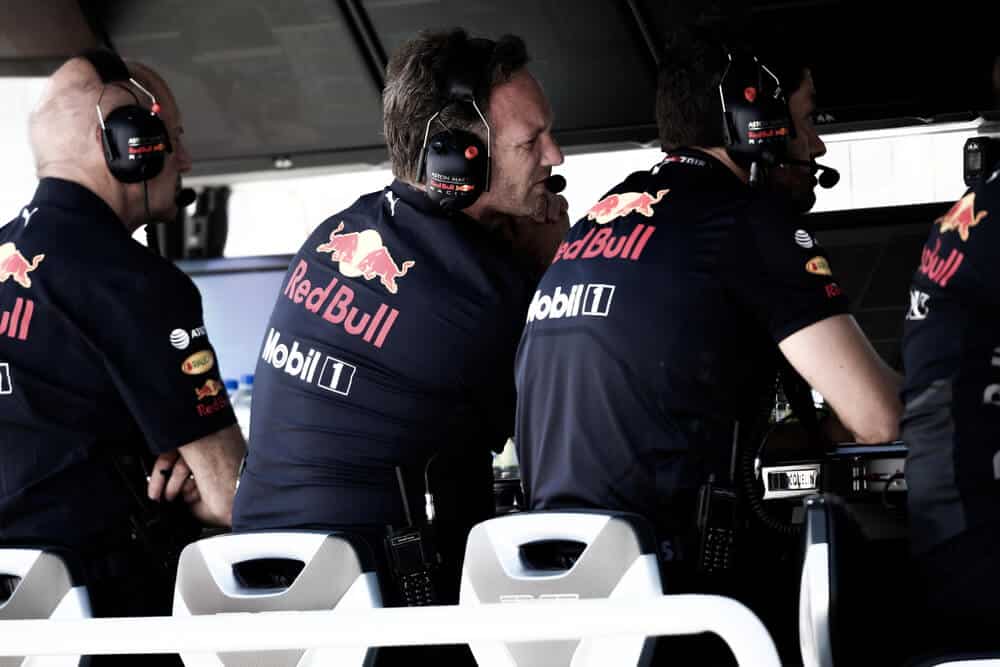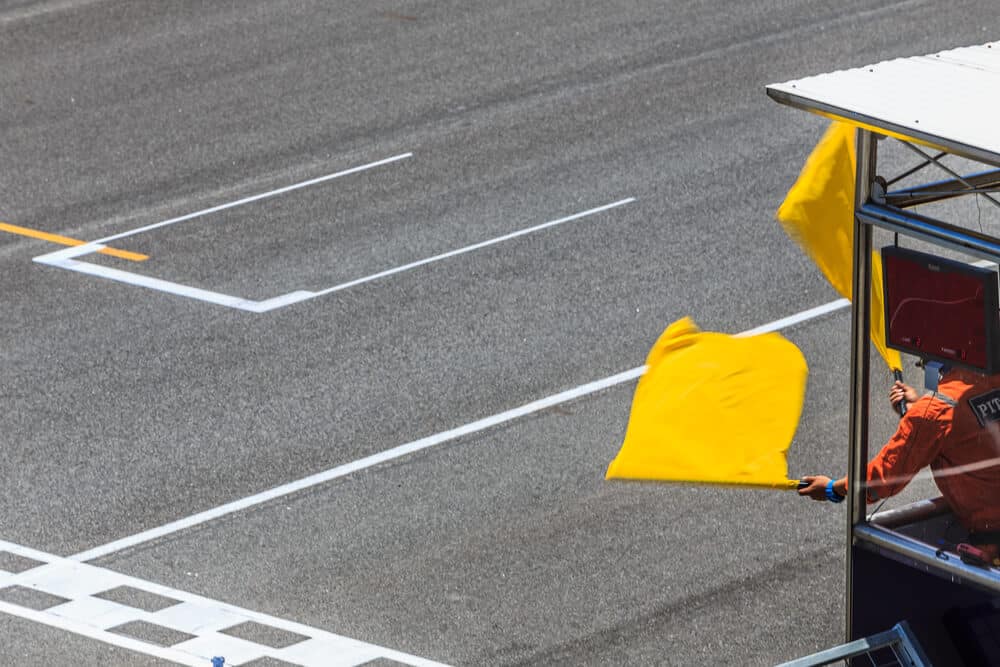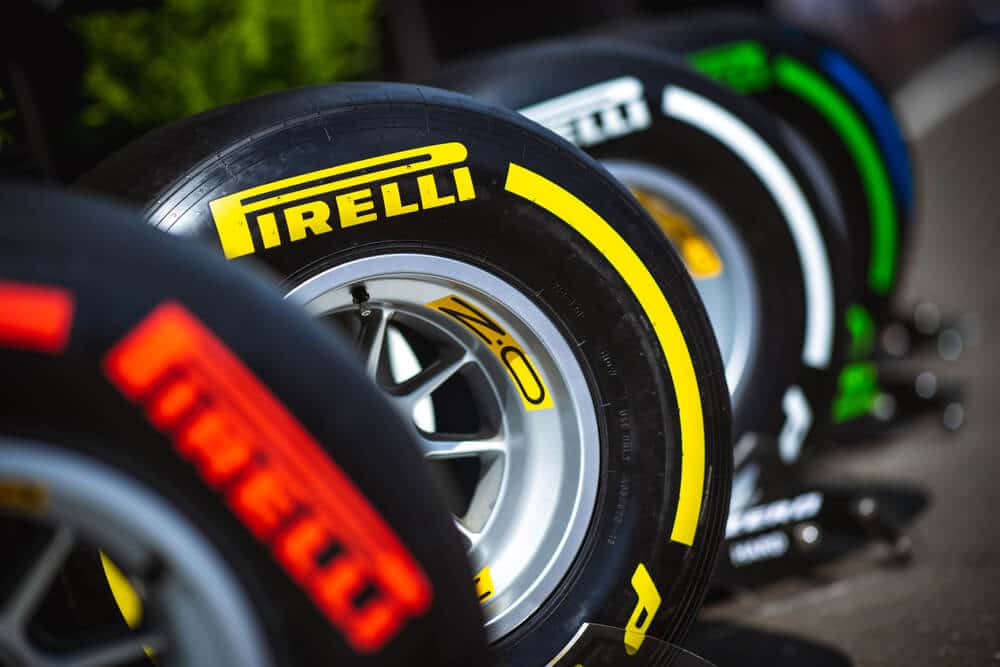Aerodynamics is a fundamental part of Formula One racing, and teams continually strive to develop the most efficient aerodynamic systems possible.
This led to the invention of the off-throttle blown diffuser which used engine exhaust gases to generate downforce when drivers were not accelerating. This increased cornering speed and stability, improving overall car performance.
However, this technology was deemed to be in violation of the spirit of the rules and subsequently banned by the regulatory authorities.
This article explores the impact off-throttle blown diffusers had on Formula One performance and how their prohibition affected the sport. It als
Table of Contents
Watch this video to learn more about the off throttle blown diffusers in F1.
Understanding Diffusers in Formula One
Before we dive into the significance of off-throttle blown diffusers in Formula One racing, it is essential to understand diffusers and their importance. Diffusers are mounted at the lower rear end of F1 cars, providing an area through which air exits.
By expanding this space, a suction effect known as downforce is created – allowing tires to grip better on the surface of the track, thus increasing cornering speed and stability. Diffusers are therefore essential elements in maximizing F1 car performance.
Types of Diffusers and Their Functions
Let’s take a closer look at the types of diffusers and their functions.
Basic diffusers
The most common type of diffuser seen in Formula One cars is the basic diffuser. These are simple designs that help to manage airflow without any extra additions. While they do offer some aerodynamic benefits, their capacity for performance enhancement is limited compared to more complex systems.
Blown diffusers
Moving beyond basic diffusers, blown diffusers were the next step in F1 aerodynamics. Utilizing the car’s exhaust gases, these designs maintain a greater level of downforce even when drivers are not accelerating.
This improved stability allows for increased cornering speed and optimizes overall performance on the track. In short, this ingenious technology was a game-changer for Formula One racing.
Off-throttle blown diffusers
Off-throttle blown diffusers are the pinnacle of Formula One aerodynamic technology. These designs use exhaust gases to generate downforce even when drivers lift off the throttle – during cornering or braking.
This allows for increased stability and cornering speed, leading to improved lap times and overall car performance. Regrettably, these devices were deemed to violate the spirit of Formula One regulations and were subsequently banned.
The Science Behind Off-Throttle Blown Diffusers
Off-throttle blown diffusers were a groundbreaking development in the aerodynamics of Formula One racing. Utilizing principles of fluid dynamics, these devices harnessed exhaust gases to create enhanced downforce, even during off-throttle periods. While these technologies delivered impressive performance boosts, they were eventually deemed too disruptive to the spirit of competition in the sport and were subsequently banned.
Detailed Operation of Off-Throttle Blown Diffusers
The off-throttle blown diffuser used engine exhaust gases to create additional downforce. It did this by channeling these gases into the car’s diffuser, creating an area of low pressure beneath the car. Even when the driver was not accelerating, the engine continued to produce exhaust gases, effectively “blowing” the diffuser and maintaining downforce.
The off-throttle blown diffuser outshined conventional systems by maintaining downforce during off-throttle periods. This resulted in increased stability and enhanced cornering abilities – critical advantages in a sport where fractions of a second can make the difference between victory and defeat.
Performance Enhancement and Controversy
Off-throttle blown diffusers improved overall lap times and provided an undeniable competitive edge. The performance improvements, however, raised questions about fairness and the spirit of the sport.
This technology essentially turned a waste product (exhaust gases) into a performance enhancer, and some argued that it gave an unfair advantage to teams that could afford to develop and implement it. Eventually, these devices were banned, reflecting Formula One’s ongoing struggle to balance technological innovation with fair competition.
Evolution of Off-Throttle Blown Diffusers in Formula One
The advent of off-throttle blown diffusers in Formula One was not a sudden occurrence, but a gradual evolution marked by technological advancements, innovation, and a bit of controversy.
Let’s take a closer look at the evolution of off-throttle blown diffuser:
Emergence and Early Adoption
Off-throttle blown diffusers were a result of an innovative approach to maximize the utility of exhaust gases. Teams started experimenting with blown diffusers in the early 2010s, but the concept of off-throttle blown diffusers truly took off when Adrian Newey of Red Bull Racing leveraged their potential. The team’s star driver, Sebastian Vettel, became synonymous with the technology due to his stunning performance on the track.
Technological Innovations and Testing
The development and optimization of off-throttle blown diffusers relied heavily on cutting-edge technologies such as Computational Fluid Dynamics (CFD) simulations and wind tunnel testing.
These tools allowed teams to model and predict airflow patterns around the car and evaluate the effects of exhaust gases on downforce generation. Data obtained from these tests was crucial in refining the design of off-throttle blown diffusers and optimizing their performance.
Integration with Other Vehicle Systems
Integration with engine management systems was a significant aspect of the off-throttle blown diffuser’s functionality. By manipulating engine maps, teams could control the volume of exhaust gases produced even when the driver was off the throttle, thereby maintaining downforce. This required careful coordination between the engine control unit (ECU) and the diffuser system, showcasing the technological finesse that Formula One teams possess.
These developments did not go unchallenged, however. As their use became more widespread, off-throttle blown diffusers also raised significant questions about the spirit of competition in the sport, leading to their eventual ban.
Regulatory Challenges and the Ban on Off-Throttle Blown Diffusers
Innovation in Formula One is not a free-for-all, and technologies like the off-throttle blown diffusers must navigate a complex regulatory framework. Controversies surrounding their use ultimately led to their ban by the Fédération Internationale de l’Automobile (FIA), dramatically reshaping the landscape of the sport.
Formula One is governed by a set of regulations to ensure fairness and safety in the sport. These rules extend to the aerodynamics of the cars, where intricate details can drastically impact performance. For instance, the design of wings, side pods, and diffusers all fall under the regulatory purview, with any violation potentially leading to penalties or disqualification.
Controversies Surrounding Off-Throttle Blown Diffusers
Off-throttle blown diffusers were a point of contention since their inception. While some lauded their innovative use of exhaust gases, others argued that they provided an unfair advantage, particularly to teams with the resources to develop them.
Moreover, their increased downforce generation raised safety concerns, given the high speeds and close racing inherent to Formula One.
The Role of FIA and the Ban
The FIA, as the governing body of Formula One, was instrumental in regulating the use of off-throttle blown diffusers. After careful evaluation and numerous debates, the FIA decided in 2011 to ban their use starting from the 2012 season.
The ban on off-throttle blown diffusers had significant implications for the sport. Teams were forced to rethink their aerodynamic strategies and redesign their cars to comply with the new regulations.
It also leveled the playing field to some extent, removing an advantage that was previously available to only a few top teams. Despite initial resistance, most agree that the ban was crucial in maintaining the spirit of competition and ensuring the long-term health of the sport.

Impact on Formula One Performance
Off-throttle blown diffusers had a profound impact on the performance of Formula One cars during their relatively short tenure in the sport. Their benefits extended beyond mere aerodynamics, influencing various aspects of the race from tire wear to fuel consumption. However, the ban on these devices also led to notable shifts in performance and competitive dynamics.
Effect on performance
Off-throttle blown diffusers significantly improved traction, allowing drivers to maintain a high level of grip even during braking and cornering. This resulted in enhanced stability at high speeds, crucial for navigating the quick, tight turns of many Formula One circuits.
For instance, Sebastian Vettel, driving for Red Bull Racing, enjoyed a dominant 2011 season partly due to the superior cornering ability provided by the off-throttle blown diffuser
The use of off-throttle blown diffusers also indirectly influenced tire wear and fuel consumption. The increased downforce resulted in greater load on the tires, leading to higher tire wear. Additionally, manipulating engine maps to maximize exhaust gas output could result in increased fuel consumption, necessitating strategic fuel management during the race.
Comparison of Race Results Before and After the Ban
The impact of off-throttle blown diffusers can be clearly seen when comparing the 2011 and 2012 Formula One seasons.
In 2011, Red Bull Racing, utilizing off-throttle blown diffusers to great effect, dominated the season. Sebastian Vettel, the team’s primary driver, clinched his second World Championship with a staggering 11 wins out of 19 races, setting the pace at circuits like the Circuit de Monaco and the Suzuka Circuit.
However, following the ban on off-throttle blown diffusers in 2012, the dynamics shifted noticeably. Red Bull Racing and Vettel were not as dominant as the previous season. For instance, the 2012 Chinese Grand Prix saw Mercedes’ Nico Rosberg taking his first ever win, a clear departure from the 2011 race where Vettel had secured the pole position.
Moreover, the 2012 season became one of the most competitive in recent memory, with seven different winners in the first seven races. Fernando Alonso in his Ferrari was now regularly challenging Vettel for wins, and the McLaren team, with drivers Jenson Button and Lewis Hamilton, had significantly improved their performance as well.
Strategies and Workarounds Post-Ban
The ban on off-throttle blown diffusers in 2012 forced Formula One teams to rethink their aerodynamic strategies. Despite the strict regulation, engineers found innovative workarounds to optimize downforce generation, leading to the exploration of new exhaust-blown aerodynamic concepts.
The absence of off-throttle blown diffusers meant teams had to get creative to retain an edge in performance. Some focused on fine-tuning other elements of the car, such as front and rear wings, to compensate for the loss of downforce. Others looked towards different ways to harness exhaust gases, an approach that led to new and intriguing aerodynamic concepts.
Harnessing the Coanda Effect
One such concept involved exploiting the Coanda effect, a phenomenon where a fluid jet (in this case, exhaust gases) ‘sticks’ to a nearby surface. Several teams, including McLaren and Sauber, designed their cars’ side pods and rear bodywork to guide the exhaust gases towards the diffuser, effectively creating a ‘Coanda exhaust.’
While not as effective as the off-throttle blown diffuser, it did provide some degree of additional downforce.
Use of Exhaust Wastegates
The introduction of the hybrid V6 turbocharged engines in 2014 provided another avenue to exploit exhaust gases. The new power units featured exhaust wastegates, which could be used to control exhaust gas flow.
Teams experimented with directing the wastegate exhaust flow over key aerodynamic surfaces, trying to emulate the effects of the banned off-throttle blown diffusers.
While these workarounds allowed teams to maintain competitive performance, they did not fully replicate the effects of off-throttle blown diffusers. The Coanda exhausts and wastegate manipulations had their limitations and added complexity to the car design. However, these strategies showcased the adaptability and ingenuity of Formula One teams, highlighting the continuous interplay between technology and regulation in the sport.
Future Prospects and Technological Advancements
With the rapidly evolving technology in Formula One, it’s not entirely inconceivable that off-throttle blown diffusers or similar technology could make a comeback. However, this would require changes to the current regulations, which, given the FIA’s focus on reducing aerodynamic complexity and ensuring fair competition, seems unlikely in the near term.
One of the challenges of reintroducing off-throttle blown diffusers would be aligning them with Formula One’s increasing focus on sustainability. While the original designs used excess exhaust gases, a more sustainable version might leverage hybrid power unit technology, ensuring that any additional downforce generation does not significantly increase fuel consumption or emissions.
While the future of off-throttle blown diffusers remains uncertain, their influence on the sport is undeniable. They symbolize an era of aerodynamic ingenuity and adaptability in Formula One, principles that continue to drive the sport forward today.
Frequently Asked Questions
Why were off-throttle blown diffusers banned in Formula One?
How did the ban on off-throttle blown diffusers affect Formula One?
What strategies did teams adopt after the ban on off-throttle blown diffusers?
Could off-throttle blown diffusers return to Formula One in the future?
Conclusion
Off-throttle blown diffusers were a remarkable innovation in Formula One, fundamentally altering the aerodynamics landscape of the sport. They exploited the car’s exhaust gases to generate additional downforce, leading to increased cornering speed, stability, and improved lap times. Despite their ban in 2012, they remain an example of an era where technical innovation pushed the boundaries of car performance.
However, the ban on off-throttle blown diffusers also underlines the importance of regulation and safety considerations in the sport. It prompted teams to find alternative strategies, sparking creativity, innovation, and a fresh understanding of aerodynamics.
Article sources
Learn more about Formula One
Want to learn more about F1? Then visit our Formula 1 glossary and dictionary.



